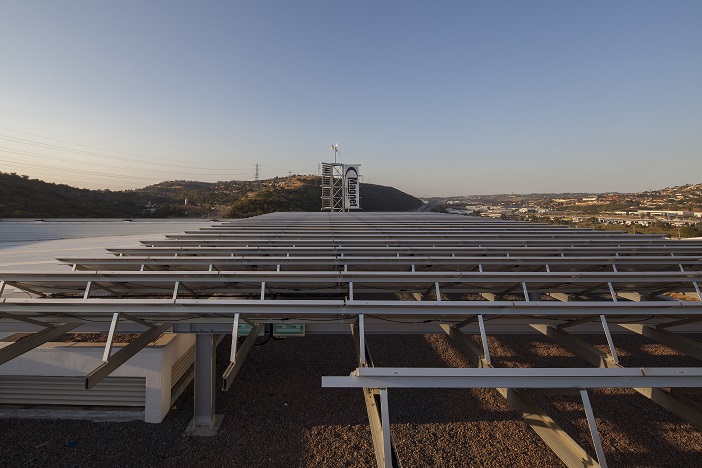Our solar offer includes grid-tied, hybrid and off-grid solutions. But – what do these solutions actually comprise of? In this article, we will illustrate the difference between these solar solutions to help you decide which system is best for you!
Types of Solar Power Systems
1. Grid-tied :
A PV system which is interconnected to the local municipality or local authority and works in tandem to supplement electrical energy usage. This system is typically made up of panels, inverters and the balance of system (BOS), which refers to the remaining components of the PV system.
2. Hybrid :
This system is also interconnected to local electrical authority, however, it has batteries as a back up. Typically, the batteries last for only a few hours, and can be used for applications such as load shedding. These systems usually consist of panels, batteries, inverters and BOS.
3. Off-grid :
This is a standalone system and is not connected to local power authority. These systems are made up of the same equipment as a hybrid system but have large battery banks. Furthermore, they are typically designed to operate for at least 3 days without any sun light.
Solar Panels
Solar panels comprise numerous solar or photovoltaic (PV) cells. These cells absorb light energy or irradiance from the sun to produce direct current (DC) electricity. Solar panels installed together make up a solar array.
Have you seen Magnet’s impressive solar array installed at our Head Office in Durban?
Inverters
The direct current (DC) electricity produced by solar PV panels needs to be transformed into usable alternating current (AC) electricity. A solar inverter does just that, and provides us with AC electricity used to power homes and businesses.
Click HERE to learn more about inverters!
Switchboards
Various appliances in your home or business require AC electricity. A switchboard receives the AC electricity from the inverter, and subsequently directs it to the various appliances and circuits in your house.
Batteries
If there is any unused electricity, it is sent to and stored in a battery bank in off-grid or hybrid systems. If you are using a grid-tied system, excess electricity is sent to the electricity grid. Note that power is wasted when batteries are at capacity and immediate use for power is not found.
Grid-Tied Solar Systems
Systems that are tied to the municipality electricity grid are the most popular of the three solar systems. Grid-tied systems do not have a battery bank. Instead, excess electricity may be fed back into the municipality electricity grid, where permitted to do so. As there is no battery involved, grid-tied solar systems are considerably more cost effective in certain applications than off-grid solar systems.
To learn more about Grid-Tied solar systems, click here to watch a quick video!
Off-Grid Solar Systems
Owing to the fact that off-grid solar systems are not linked to the municipality electricity grid, a battery storage system is therefore required. Without an electricity grid connection, excess electricity is sent to the battery bank. However, once the battery bank is full, it stops receiving electricity from the solar system. In the instances when your solar system is not generating power, for example at night, appliances in your home then draw electricity from the battery bank. When batteries are low in charge, for example during times of unfavourable weather, you will need a back-up generator. Ensure that the generator you invest in is sufficient to supply your house and charge the battery bank simultaneously. Remember to factor in the cost of maintaining your generator, and the fuel it requires.
With the considerable cost of battery banks in mind, this means that off-grid systems are more expensive than grid-tied systems. As such, off-grid systems are commonly located in remote areas that are situated far from an electricity grid.
Hybrid Solar Systems
Grid-tied solar systems with battery banks are known as hybrid systems. This allows for power generated during the day, to be accessible at night. Batteries can only store power for a few days or at their maximum capacity. When batteries are exhausted, power is then drawn from the grid. Hybrid systems can also charge batteries during off-peak periods when electricity is cheap.
Do you need advice on which solar system is best for you? Chat to one of our experts!
Click here to send an inquiry now.


